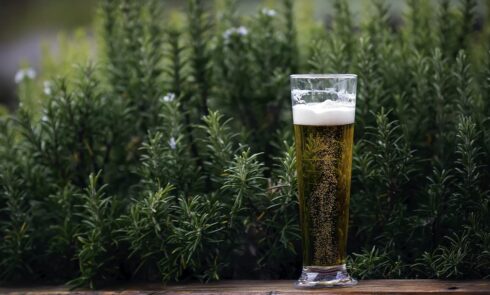Winemaking is one of the oldest occupations of mankind, which became available almost simultaneously with the appearance of the cultural variety of its main ingredient – grapes. Wine production is a complex technological process that has been developed and perfected over the centuries. About the nuances of industrial wine production, as well as the process of making wine at home – in our article.
History of Winemaking
Technologies of production of grape alcoholic beverage were known to man already in the era of ancient Egypt. Proof of this are the vessels found in the tombs, sealed with resin stoppers, which contained the “divine drink”, designed to decorate the afterlife of the deceased.
The Greeks and Romans were no less successful in wine-making. The product they produced was rarely consumed in its pure form. More often it was diluted with seawater or evaporated to a thick syrup, which had to be diluted when consumed. The peoples of Mesopotamia and Persia, Transcaucasia and Asia, the ancient Sumerians and Scythians were familiar with the technology of wine making.
With the fall of the Roman Empire wine making fell into anabiosis for almost a thousand and a half years. In the Middle Ages wine was consumed only in the southern parts of the European continent, where grapes grew. Scarce export allowed only the privileged strata of the population to enjoy the drink, as the cost of the bottle was very high. The permanent consumers and the main producers of wine were the Catholic monks, because the drink was an integral part of the Catholic masses. The largest vineyards in Champagne, Burgundy and Bordeaux belonged to the ecclesiastical class.
It is thanks to the monks that today we can enjoy all the richness of taste and aroma of the many wines. Recognizing the profitability of the grape drink trade in time, they began to actively improve wine-making techniques, gradually making the drink more and more accessible. By the end of the XVIII century it was no longer the prerogative of the high society – wine is served in street taverns and roadside taverns.
The age of enlightenment and the scientific and technological progress that accompanied it has had a beneficial effect on wine making. The wine industry improved through the use of new technology and equipment. Machines for harvesting grapes appeared, which increased production volumes and reduced production costs. New filtration and preservation methods appeared and the storage conditions improved, which had a positive influence on the quality of wine.
Today, just as thousands of years ago, it is difficult for us to imagine our life without wine. Although it has lost its religious purpose, the secular life of society without it is almost impossible. Everyone has the opportunity to choose a variety to their liking and enjoy its unique taste and aroma. In addition, the wine-making process takes place not only in large factories, but also in small apartment kitchens.
Wine production technology
Industrial production involves several stages:
Gathering the grapes. A very important stage, because the quality of the raw materials used will directly depend on the quality of the finished drink. Only ripe berries are used in the process of creating any wine. Their ripening period depends on the region of cultivation and the grape variety. In the Northern Hemisphere it is the autumnal period, from September to November, in the Southern Hemisphere from February to March. With the growth of technological progress, the harvesting process has been greatly simplified thanks to the creation of specialized equipment. But even today, some types of wine require manual harvesting. These are expensive vintage wines which require particularly careful picking. The most common varieties used to produce wine are:
aligote;
chardonnay;
pinot noir
cabernet sauvignon;
riesling;
merlot;
white muscat.
Most often the name of the drink itself coincides with the name of the grape variety from which it is made.
Berry processing. It includes two stages, primary and secondary.
Primary processing includes:
washing of berries;
separation of combs;
treatment with steam.
The latter procedure is provided only by the technology of white wine making, as protection from oxidation and means of elimination of harmful microorganisms. After this treatment it is easier to remove the skins from the grapes, because they are not used for white wine.
Secondary processing involves crushing the grapes to obtain their pulp. Before the appearance of special machines, enabling large quantities of grapes to be simultaneously processed, grapes were crushed with bare hands or feet in special tanks. During the production of red wine the pulp is heated, which favours the rapid extraction of the juice and the transfer of maximum colouring and aromatic substances from the skins.
Fermentation of must. After the preparation of grape must, obtained by crushing the grapes, the fermentation process begins, one of the most important stages of production. The process is carried out by the natural yeast in the grapes, as well as artificially added. This reacts with the sugar to form alcohol. Wine fermentation also has two stages:
active – lasts up to 5 days, resulting in the sale of most of the finished drink; the process takes place in open containers, as it releases large amounts of carbon dioxide;
passive fermentation – follows the active fermentation and lasts considerably longer – from two to three weeks, and access to open air must be closed for this period.
The duration of passive fermentation depends on the amount of sugar in the drink. Dry wines have the longest fermentation time. Sweet and dessert wines, which have the highest sugar content, ferment most actively.
Preservation. The production technology of factory grape wines provides for the obligatory preservation process, which extends the shelf life of the beverage. Wine can be preserved by means of several technologies:
Pasteurization – involves heating the liquid to 60-90 degrees and then cooling it to its original temperature. Exposure to high temperatures kills harmful microorganisms, but does not affect the taste of the drink.
Sterilization is a similar process to pasteurization, aimed at killing microorganisms. The only difference is the temperature of heating – during sterilization it is 120 degrees.
Aseptic canning is also the heating of the liquid, after which the mandatory bottling of the drink is required.
Using preservatives is one of the easiest, and therefore most common, ways to extend the shelf life of wine. Preservatives may be of natural origin – extracts of fruits, berries, sugar or ethyl alcohol (for fortified wines) or of chemical origin – sodium benzoic acid, acetic acid, salicylic acid or sulfuric acid. The only disadvantage of this method is the risk of altering the taste of the wine.
Aging. Some types of wine are sent to cool, dark rooms to increase the palette and aroma.
Process tanks
image_vignoble_bourgogne.jpgThe preparation and storage of wine material requires special containers. They can be:
Oak barrels are one of the most popular types of tanks, due to their environmental friendliness. With proper care, wooden barrels can last from 30 to 50 years. Wine steeped in barrels has a unique aroma and taste.
Clay jugs are one of the oldest containers in which the wine has been kept since our ancestors. Today, this method is actively used by the peoples of the Caucasus. To maintain the correct temperature, the jugs are buried in the ground.
Artificially created containers – tanks made of plastic, stainless steel or titanium are popular due to their durability and aseptic properties.
Stages of production of different types of wine
The technology of production of red wine involves the following stages:
Harvesting the grapes.
Crushing the berries and separating them from the pulp.
Fermentation of the must at a temperature of 26-300, accompanied by frequent stirring.
White table wine production includes:
Preparation of berries – separating them from the bunches, crushing.
Separation of must, its sedimentation and fermentation at a temperature no higher than 200.
Pouring the wine to get rid of sediment.
Yeast clarification of the wine material (if necessary).
Sparkling wines. A peculiarity of their production is secondary fermentation directly in bottles or in separate tanks. The liquid is saturated with yeast or sugar syrup. As a result, the drink is saturated with carbon dioxide, which gives it that “bubbly” quality that millions of people are so familiar with.
Fortified wines. Made by adding ethyl alcohol. The mash of the future beverage is subjected to alcoholization. The resulting product not only has a higher alcoholic strength, but also a higher sugar content.
Dessert wines. To obtain sweet wines resort to the following manipulations:
use special varieties of grapes, characterized by increased sugar content;
If necessary sugar or alcohol are added to the must;
In some cases the grapes are extracted before processing.
The process of making wine at home, although different from its industrial counterpart, still has much in common with it. Homemade wine is made without preservatives, resulting in an environmentally friendly product. The cooking is based on the same fermentation process. There are a great number of recipes for making home wine, each of them has a number of peculiarities and secrets, passed down from generation to generation.


